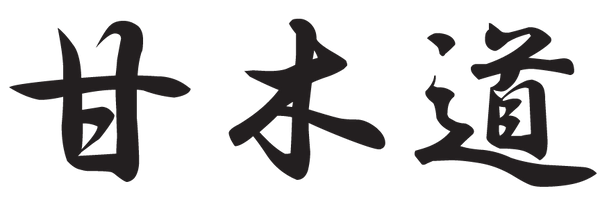Dragonfly Incense Burner by Bunsai Ogawa
Dragonfly Incense Burner by Bunsai Ogawa
Couldn't load pickup availability
Width: 13.0cm x 10.0cm Height: 19.0cm
Dragonfly incense burner - Made by the sixth generation Ogawa Bunsai (Kyo)
The Dragonfly Incense Burner by Ogawa Bunsai VI is a piece full of dynamism and poetry, as if a fleeting summer scene had been captured in the vessel itself. A dragonfly fluttering on the lid has a striking presence amid the simple texture of the rich earthenware body. The delicate yet bold design is a work that can be said to be the culmination of the dragonfly motif that symbolizes Ogawa Bunsai's recent creations.
A sculpture born from an encounter with a dragonfly
In contrast to the "red" tones used by Bunsai V, Bunsai V has made the exploration of "green" the core of his pottery, entrusting his prayers for peace and resonance with nature to his pottery. In the midst of all this, it was a personal "revelation" that led him to fully incorporate the dragonfly motif.
One summer day, while Ogawa Bunsai was working in his garden, a dragonfly suddenly appeared in front of him, landed on his finger, and stared at him. At that moment, he said he sensed the voice of his late father, Godai Bunsai, telling him, "Use it without hesitation." After this incident, Bunsai began to actively incorporate dragonflies into his works, leading to the creation of this piece, which combines playfulness and spirituality.
Sculptural beauty between motion and stillness
The greatest appeal of this piece is the contrast between motion and stillness created by depicting a dragonfly, a flying creature, on a quiet vessel like an incense burner. Moreover, the dragonfly's wings are boldly decorated with a lattice pattern, which not only creates a visual impact but also demonstrates the high level of shaping ability as a work of art. The glaze on the body is kept subtle to show off the base material, and the surface is rough enough to feel the particles of the soil, and the intricate dragonfly on the lid creates a complex beauty that combines nature and man-made, stillness and motion, simplicity and splendor.
Additionally, the legs are designed to resemble three wheels, and while they are somewhat humorous, they also serve as a structural element that enhances the stability of the vessel, making the design more practical than it looks.
Function and presentation of incense burner
A kousa (incense burner), a vessel for burning incense, can also be called a "vessel for designing space" due to its function. In this piece, the incense rises from the small holes in the lid, and the flapping of the dragonfly's wings overlaps with the incense smoke, creating the illusion of a dragonfly actually flying in the wind. The scent wafts along with memories of summer, natural scenery, and the potter's thoughts.
If placed in a Japanese-style room, it will bring a refreshing breeze to the tokonoma alcove, and even in a modern space, it will become a kind of "conversational object" that will draw the viewer's attention and emotions.
The history of Bunsai Kiln and the journey of the sixth Bunsai
The first Ogawa Bunsai (Bunsuke) learned kiln-building techniques in Kyushu, and founded the company in 1847 in Kaseyama, receiving the character "sai" and family crest from the Ichijo family. In 1873, he built a kiln in Gojozaka, Kyoto, and since then, six generations have passed and the fires of pottery have been burning in Kyoto for over 150 years.
The current head of the family, the sixth generation, Ogawa Bunsai (Oki), studied sculpture at graduate school, then went on to study ceramics at the Kyoto Prefectural Ceramics Technical College, and is a talented artist who has won numerous awards at the Nitten Exhibition and other exhibitions. In addition to the traditions of Kyoto ware passed down from generation to generation, he has pioneered new areas of expression by actively fusing a sculptural approach with a modern sense of form.
"While praying for peace, I will do my best to create artwork that I believe to be beautiful." Based on this belief, the Dragonfly Incense Burner strongly embodies the wish for a world without conflict through the use of the color green.
A vessel of memory and rebirth brought about by a single dragonfly.
This is a memorable piece in which the spirit of the 6th Bunsai quietly soars.
Please receive these feelings along with the fragrance.
Share
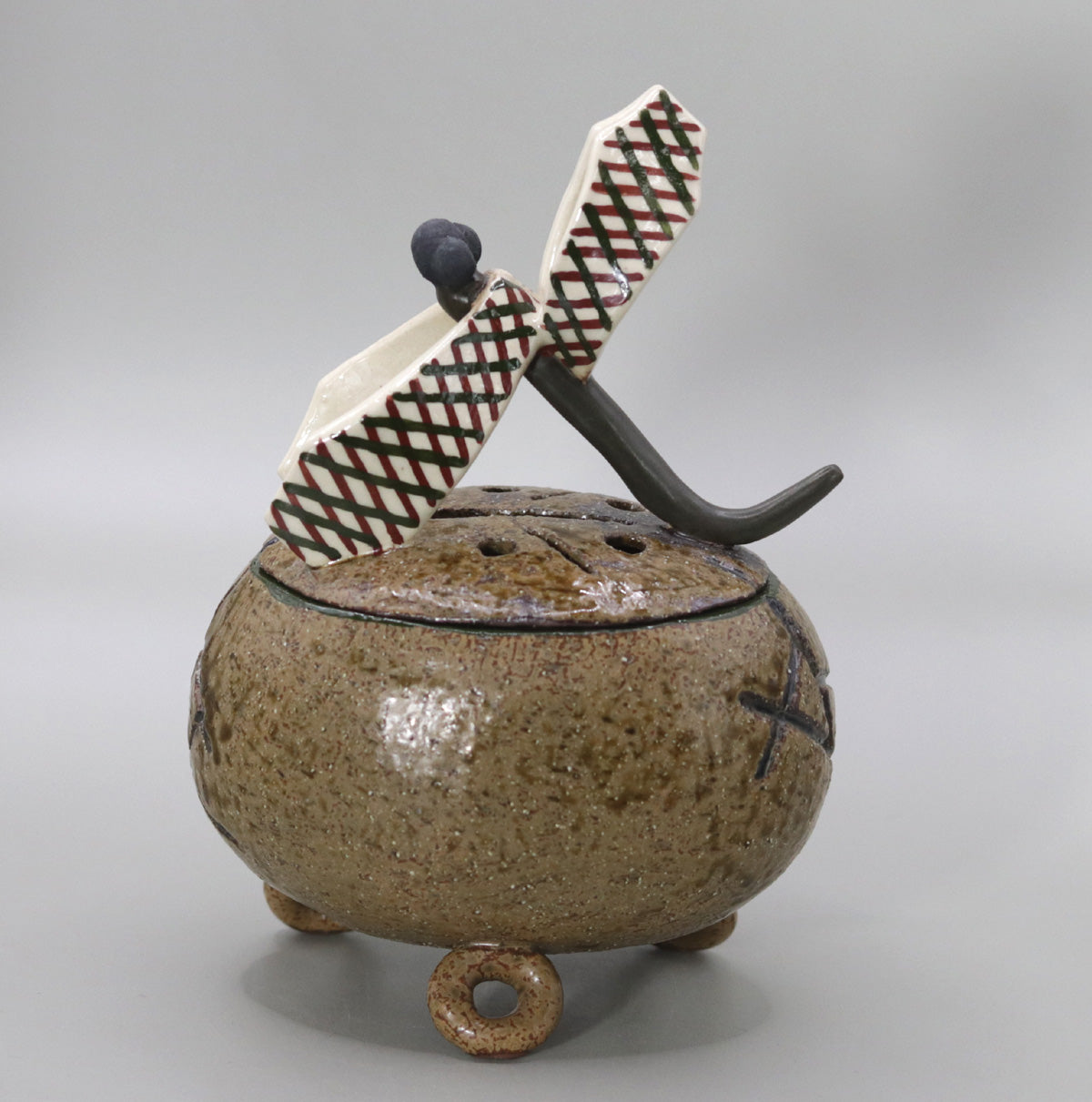
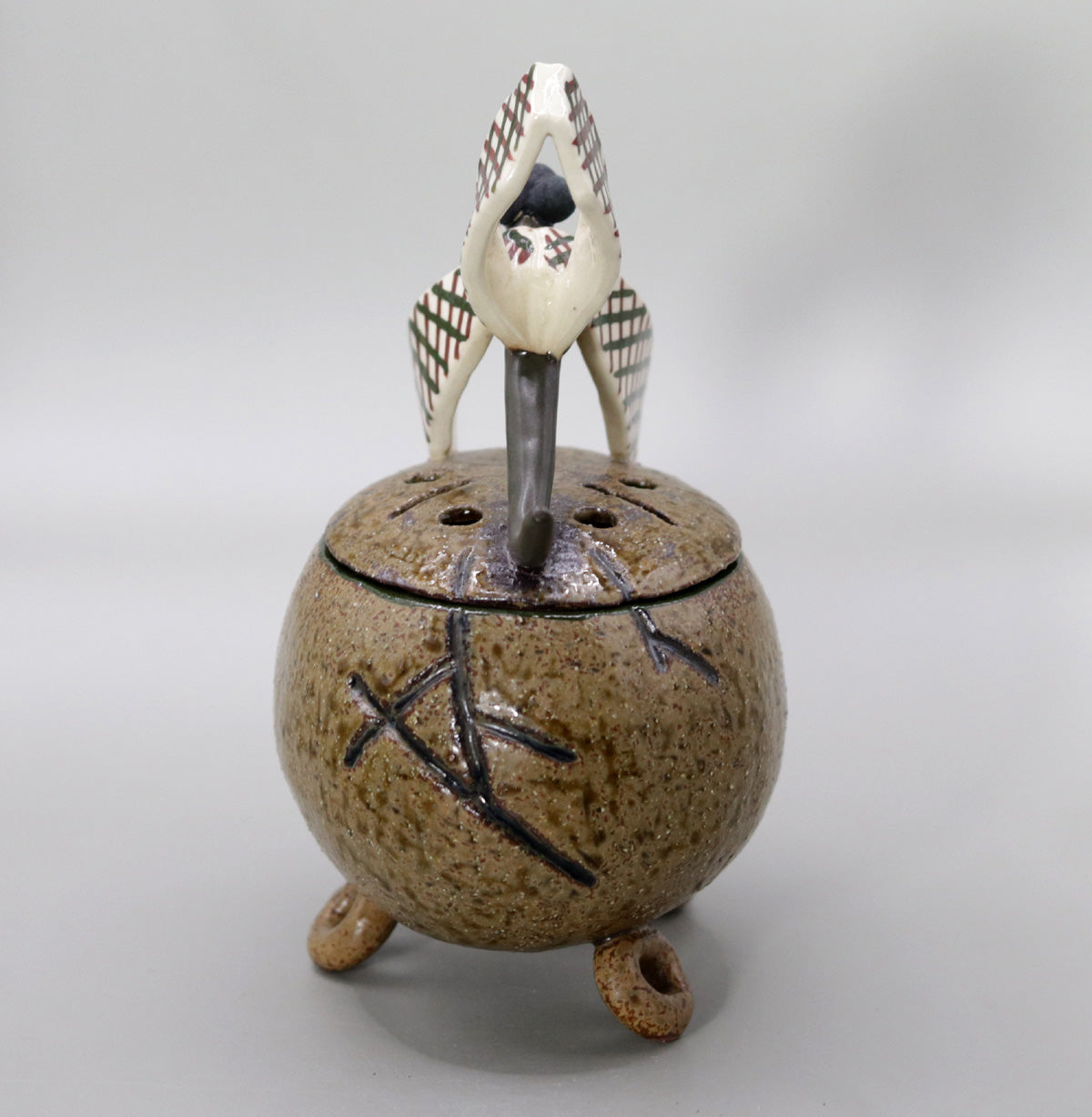
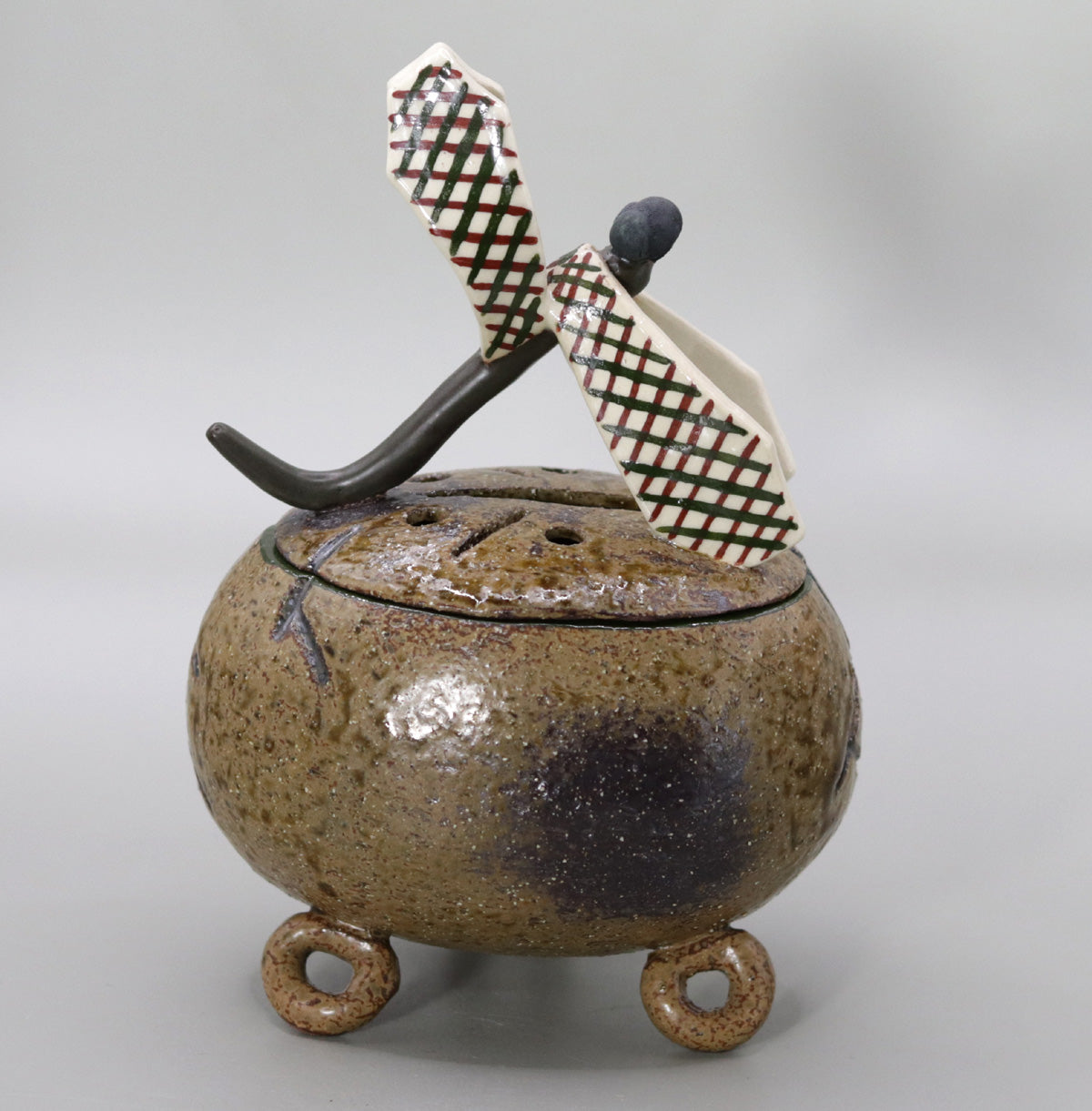
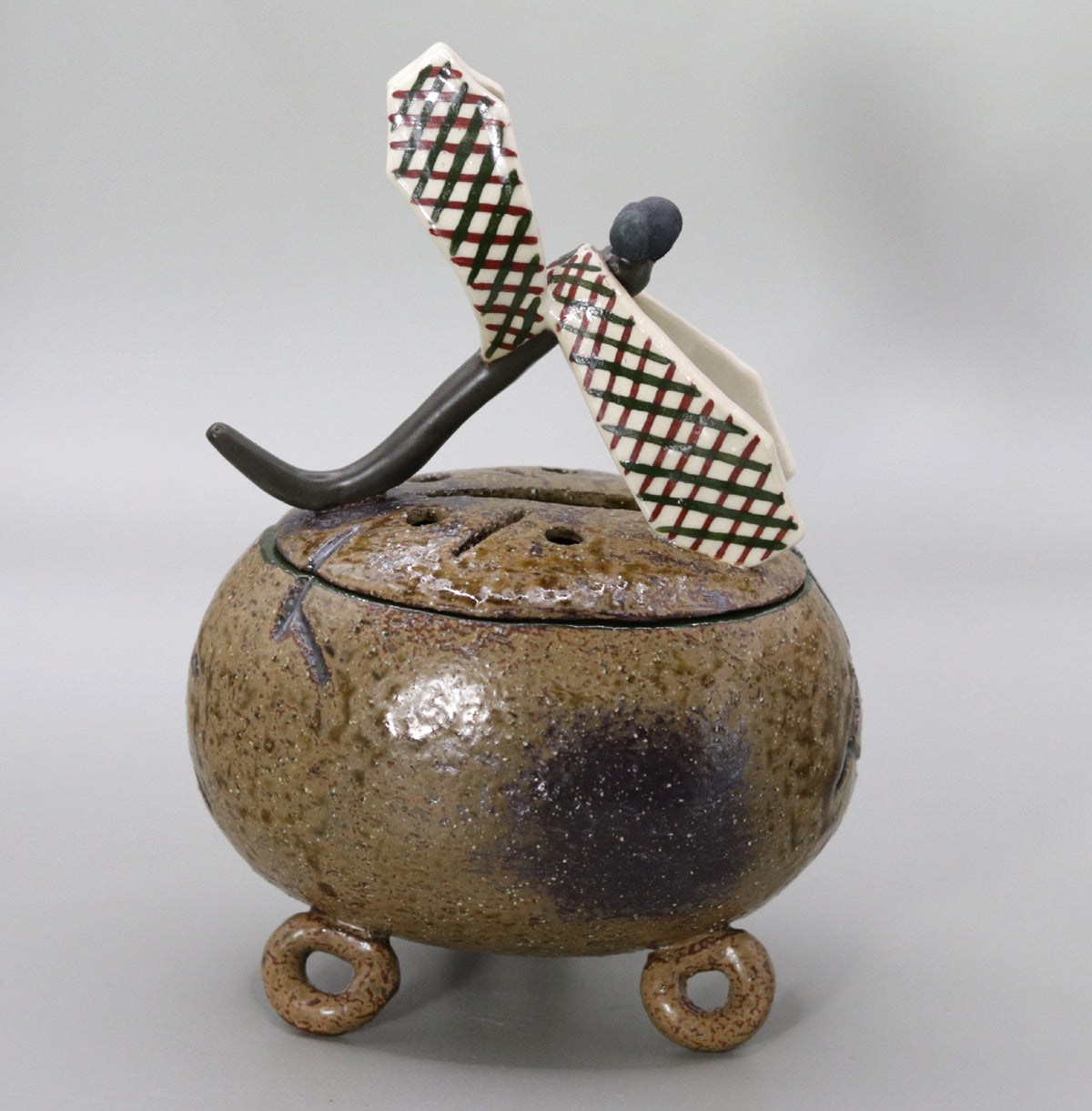
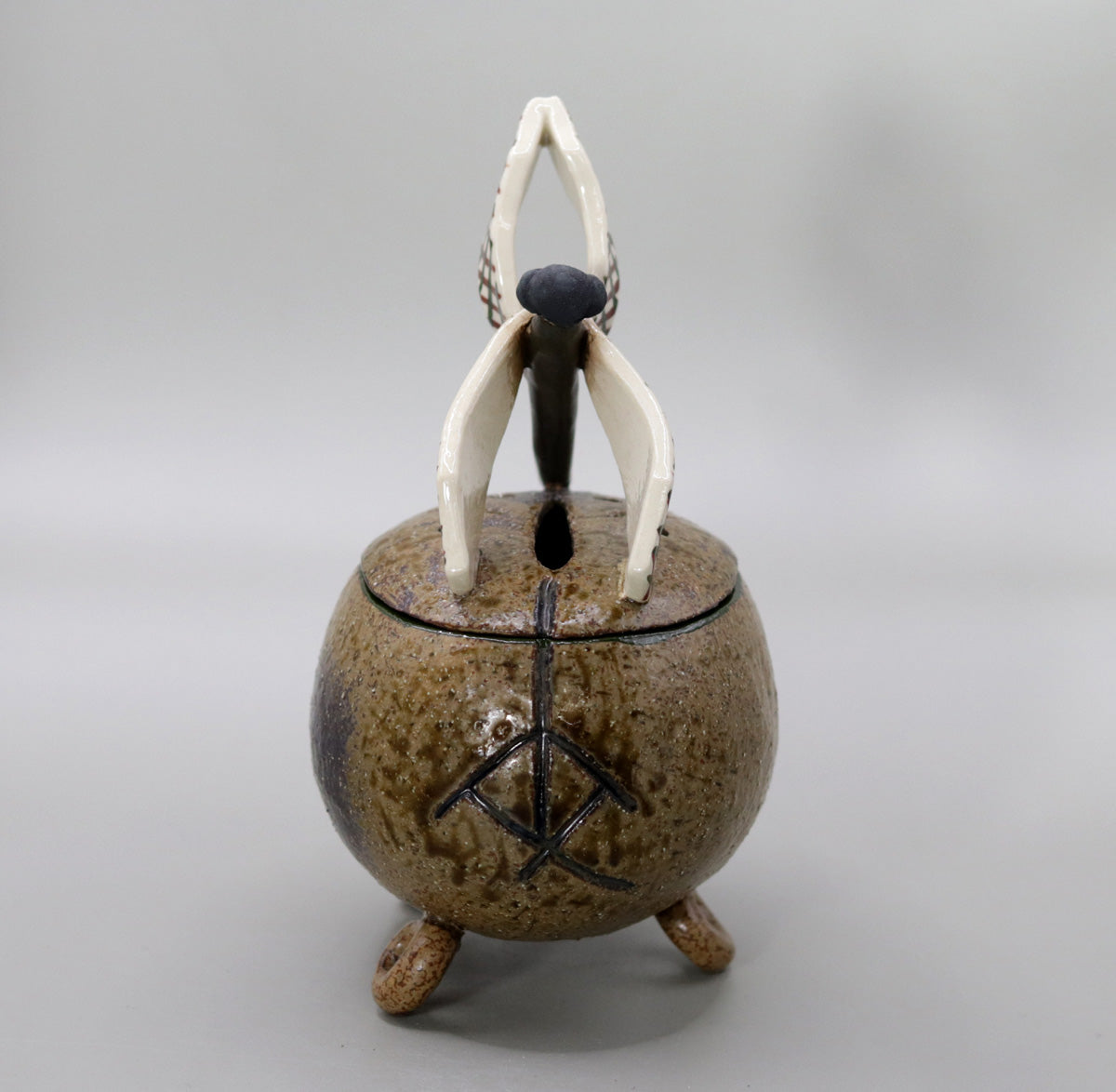
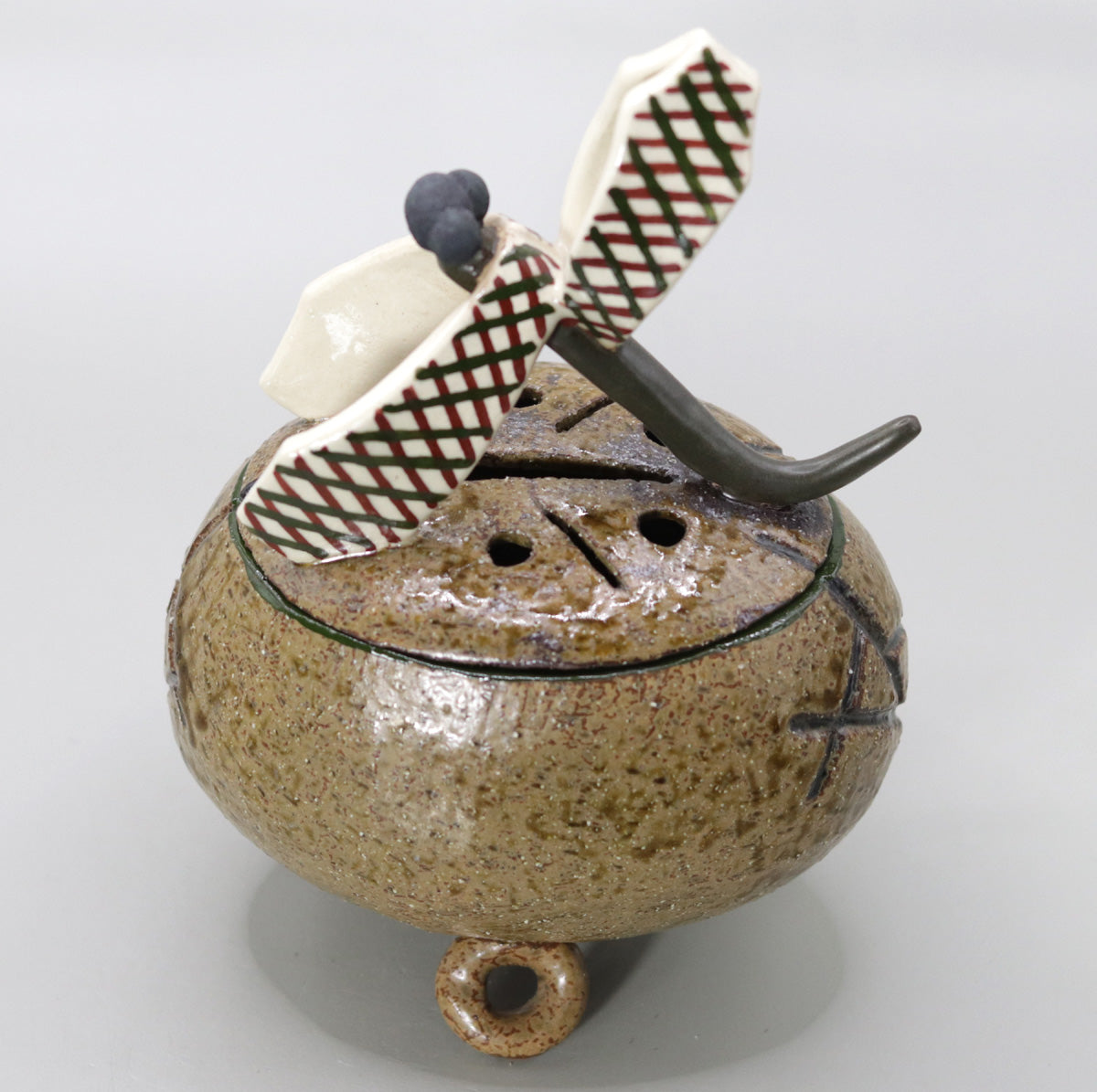
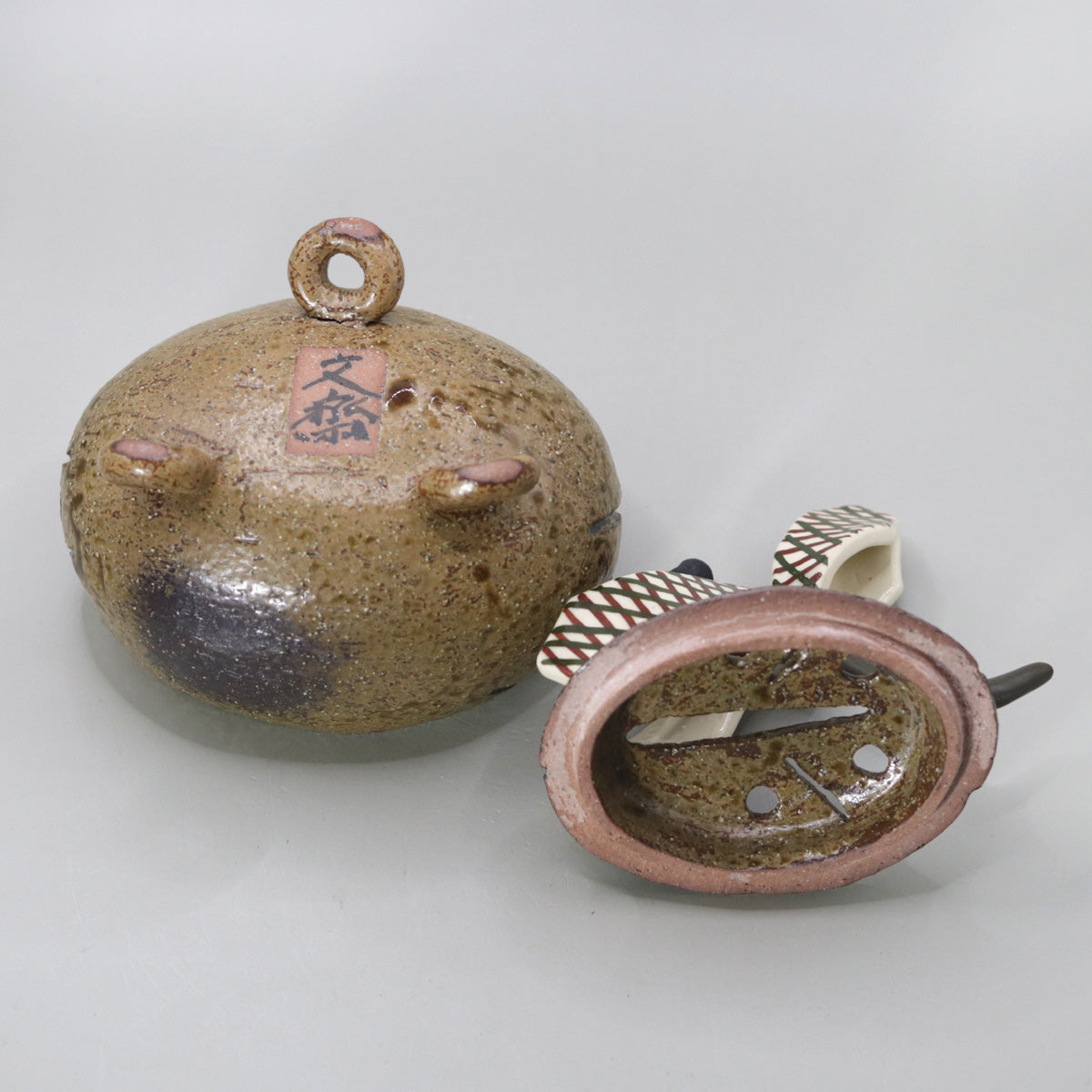
Multi-Column
-
[I will send it to you quickly and carefully]
We carefully package each product in a way that suits it best.
Also, delivery times vary depending on the piece (vessel, etc.).
Items that already come with a box will be shipped within 1-3 days of the order date.
For items that require a box to be made after your order, it will take approximately 30 days for production to be completed and then shipped.
In either case, once we have confirmed your order, we will contact you by email to inform you of the delivery date.
-
[Requests when purchasing pottery]
Even products that look the same may differ slightly in color, shape, size, etc.
The way the glaze is used, the power of the kiln, the firing method, the season, and the humidity also affect the appearance of the pottery.
Please understand the individuality of each piece of pottery and enjoy the unique warmth of handmade.
